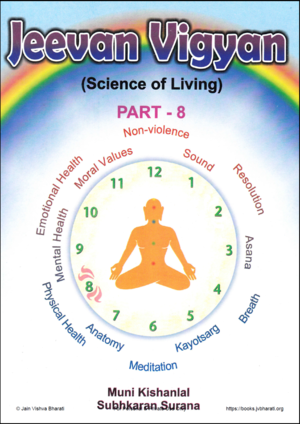DIGESTIVE SYSEM
Digestive System in our body forms the basis on which depends the correct functioning of all other organs. Food that we eat reaches the digestive system and is digested there. From there all the ingredients necessary for the right functioning of the body are transferred to the various organs of the body. The first organ of the digestive system is the MOUTH. Food is masticated and transformed into a paste like substance with the help of saliva secreted by the salivary glands in mouth.
1. FOOD-PIPE
After the food is chewed up, it passes into the food-pipe via throat-well. It must be noted here that the breathing-pipe (Trachea) as well as food-pipe (Oesophagus) open in the throat-well. When food is ready to go from the mouth to the Oesophagus, a thin diaphragm completely covers the Trachea, preventing the food from entering the breathing pipe. Muscles of the food-pipe expand and contract with the movement of food. From food-pipe, the food enters into stomach. Food-pipe is 25 cm long and its diameter is about 2.5 cm.

2. STOMACH
Stomach is the third stage of the journey of food. It is like a hollow bag, about 22 cm long. It is situated on the left side of chest cavity under the rib cage. When it is full, it is broad at the top and narrow at the bottom. If one eats more than the holding capacity of stomach, one invites many diseases like nervous debility, indigestion, pain in waist region, rheumatism, diabetes etc.
The capacity of the stomach is to hold about 1.50 to 2.00 litres at one time. The undigested food remains in it from 3 to 5 hours. During this period, muscles of stomach keep on contracting and expanding and food material is churned all the time. Also various digestive and gastric juices are vigorously mixed with food, a process which goes on for about 3 to 4 hours.
3. DUODENUM
From the stomach, whose lower end is narrow, the food material crosses into the fourth stage, known as the small Intestines. Its front part is called DUODENUM which is about 25 cm long. Bile-juices (produced in liver) are poured into duodenum from the gall bladder and pancreatic juice (received from the Pancreas gland) is mixed in this region. Spleen also adds its secretion and all these factors work together to absorb proteins, fats and carbohydrates from the digested food.
4. SMALL INTESTINES
From the duodenum, the food material reaches the smaller intestines which is about 7 meters long. Its functions are also like stomach but food elements get more juices from inner walls of small intestine as food is pushed forward. There are numerous cells along the inner wall of small intestines, which absorb various fluids from food material. Spleen turns these absorbed juices into blood. The unabsorbed material then passes into the large intestines.
5. LARGE INTESTINES
This organ does not take in any particular way in the digestive process. But when food left after absorption enters here. This organ absorbs salts and other materials fit for absorption along with the liquids. Then the entire residual material is pushed out of the body as a waste in the form of stool.
AUXILIARY ORGANS OF DIGESTIVE SYSTEM
It is important to learn about the following two auxiliary organs of the digestive system:
- Liver,
- Pancreas.
1. LIVER
Liver is called the bile-duct. It is situated in the right lower end of the chest cavity under the diaphragm. It is the largest gland in the human body. It discharges multifold functions. In a way, it is the largest factory in the body manufacturing chemical elements of a large variety. It discharges about 500 functions. Its main feature is the supply of blood to arteries. Bile-ducts go out from liver to end in gall bladder. Bile plays an important role in digesting the food. However, we may say that the liver performs four main functions:
- Production of bile juices.
- Supply of glucose all over the body through the medium of blood circulation so that all organs keep on receiving heat and energy.
- To save body from harmful elements like alcohol and dangerous drugs.
- Transform amino acids into urea after separating them from nitrogen, and pass them on to kidneys for discharging outside the body through urine.
2. PANCREAS
This is situated behind the stomach, touching its rear wall. This is the second largest gland of the human body. There are two kinds of discharges from this gland, internal and external. The external discharges or secretions neutralize the acidity of the digested material in the stomach with their alkaline effect. Gall bladder also discharges a hormone which functions as a messenger to the pancreas to produce more alkaline liquid.
Under the category of internal secretions, from the cells of pancreas two hormones are discharged. One is called the GLUCAGON and the other is known as INSULIN. Both these hormones maintain the level of sugar in body. When sugar level in the blood rises, insulin secretion activates itself and reduces the excessive amount of sugar in the blood. If somehow he sugar level in blood goes down, the Glucagon secretion brings the sugar level to the normal.
EXERCISE
- Describe the digestive system in detail.
- Which are the auxiliary organs of the digestive system?
